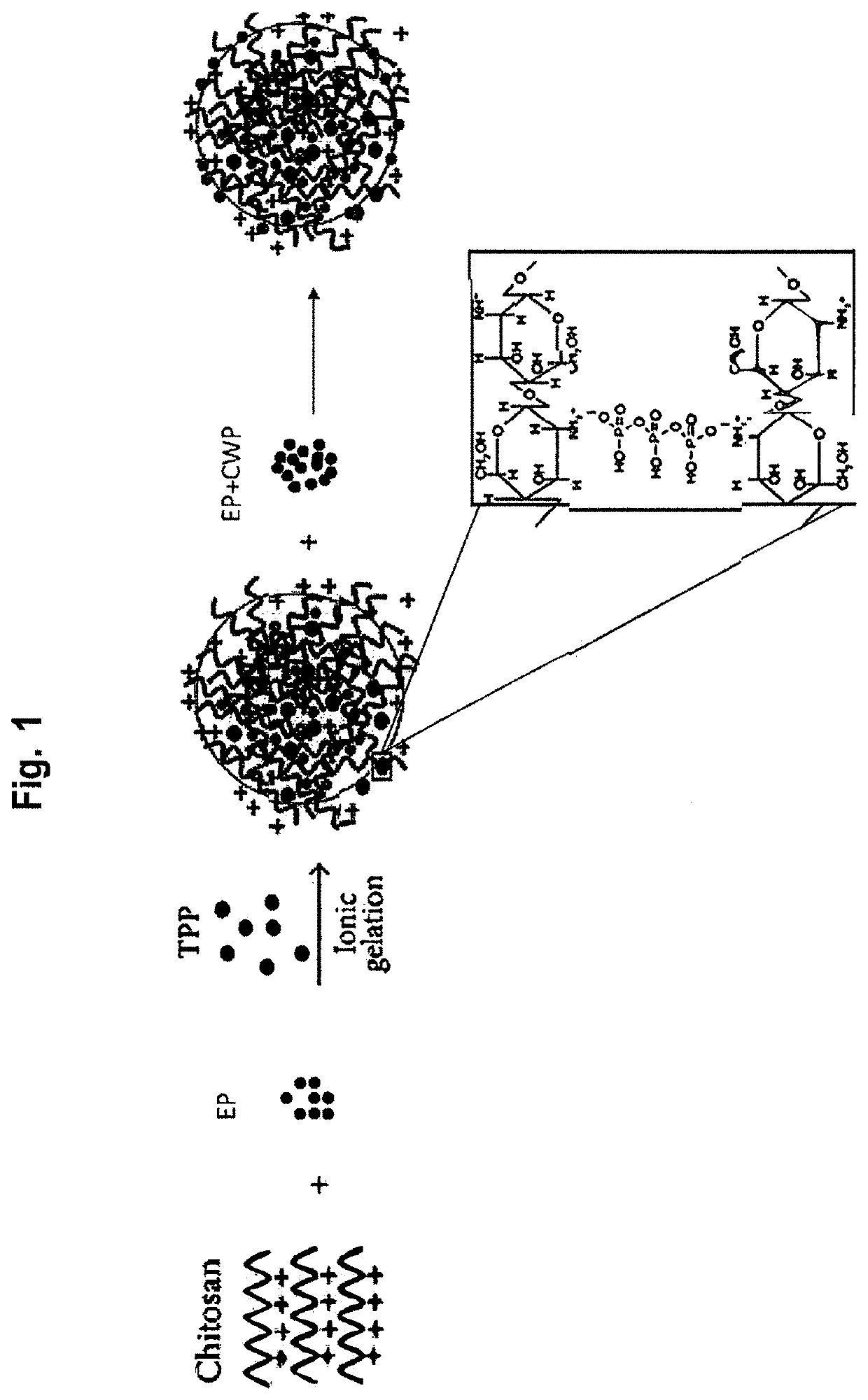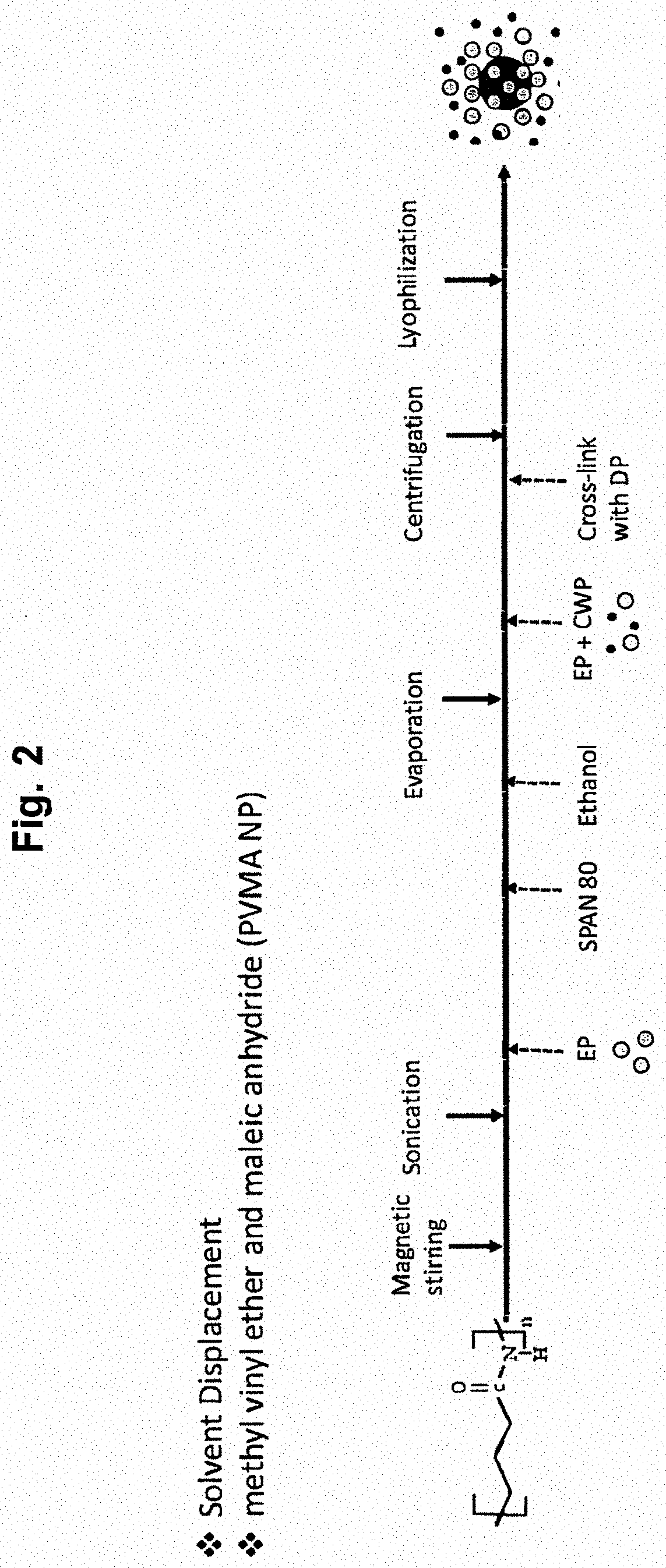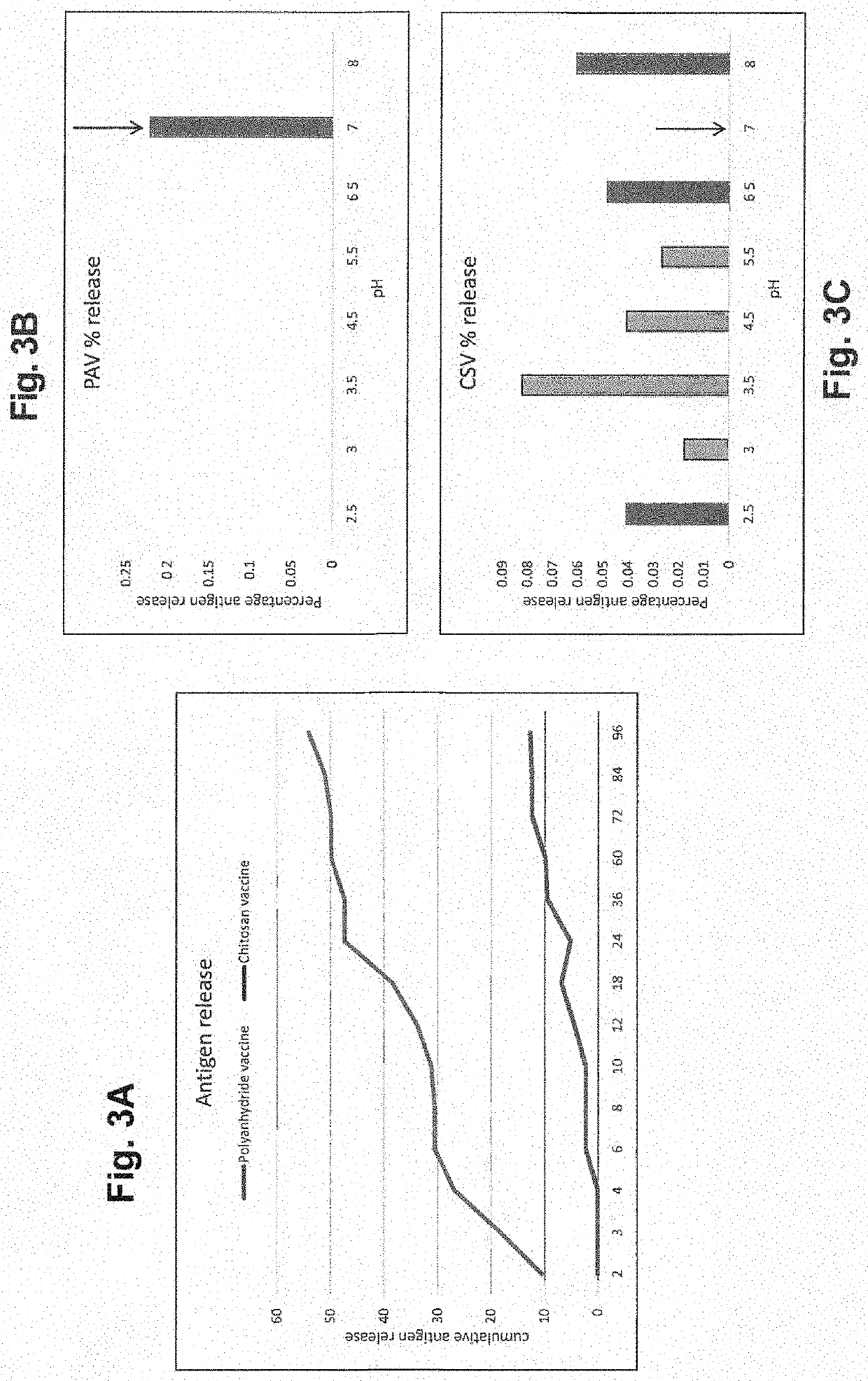Poultry vaccine for clostridium perfringens
a technology of clostridium perfringens and poultry vaccine, which is applied in the field of poultry vaccine for clostridium perfringens, can solve the problems of large reduction of growth and feed conversion rate, significant economic loss, and necrotizing lesions
- Summary
- Abstract
- Description
- Claims
- Application Information
AI Technical Summary
Benefits of technology
Problems solved by technology
Method used
Image
Examples
example 1
Characterizing and Assessing the Safety and Immunogenicity of Chitosan and Polyanhydride Nanoparticle Vaccines Loaded with Clostridium perfringens Antigens
[0100]Cell wall-associated and extracellular proteins were extracted from exponentially growing cultures of CP6 cells following the procedure of Tavares and Sellstedt (“A simple, rapid and non-destructive procedure to extract cell wall-associated proteins from Frankia,” J Microbiol Methods, 2000; 39(2):171-8). The method includes washing cells in 62.5 mM Tris-HCl (pH 6.8) buffer supplemented with 0.1% Triton X-100 as solubilizing agent. Proteins were then salted out by ammonium sulfate precipitation, followed by buffer exchange. SDS-PAGE (10%) was performed of protein preparations.
[0101]FIG. 1 shows a schematic for the design and synthesis of chitosan nanoparticle (Ch-Np) vaccines. FIG. 2 shows a schematic for the design and synthesis of polyanhydride nanoparticle vaccines. Briefly, cell
[0102]FIGS. 3A to 3C show entrapment efficie...
example 2
In Vitro Characterization and Immunogenicity of Chitosan Nanoparticles Loaded with Native and Inactivated Extracellular Proteins from a Field Strain of Clostridium perfringens Associated with Necrotic Enteritis
[0106]With the present example, chitosan nanoparticles were formulated with native (CN) or toxoids (CT) of extracellular proteins (ECP) of C. perfringens (CP), both surface-tagged with Salmonella flagellar proteins. In a pH stability assay, CN and CT nanoparticles released 6% and 0% of their protein at 8.0 pH. In a protein release assay, CN and CT nanoparticles released 16% and 10% of their protein respectively at 7.4 pH after 24 hours. CN and CT nanoparticles incubated at 100 μg / ml PBS with Chicken red blood cells (cRBC) released 0.7% and 0% hemoglobin, respectively. Ninety broilers were randomly assigned to treatments; sham-vaccinated (Control), CN-vaccinated (CN), and CT-vaccinated (CT). Each bird was orally gavaged with 50 μg vaccine in 0.5 ml PBS or 0.5 ml PBS only on day...
example 3
Mucosal Immunity of Broilers Vaccinated with an Oral Polyanhydride-Nanoparticle Based Clostridium perfringens Vaccine Expressing Salmonella enterica Flagella
[0143]Two-separate studies were performed to analyze the protective effects of an oral polyanhydride-based Clostridium perfringens nanoparticle vaccine (PNP) loaded with inactivated Clostridium perfringens crude supernatant protein and surrounded by Salmonella enterica flagella. Study A constituted a complete randomized design of 3 treatments with 6 replicates. Day-hatched male Cobb-500 broilers (n=30) were orally gavaged with PBS (mock-vaccination) or 50 ug / 0.5 ml of polyanhydride-based C. perfringens inactivated supernatant toxin vaccine (PN) or polyanhydride-based C. perfringens inactivated supernatant toxoid vaccine (PT). Boosters were administered at 3, 7- and 14-days post-hatch. Study B comprised a complete randomized design of 2 treatments with 6 replicates (n=6): Unimmunized or PN-vaccinated. Results of study A and B dem...
PUM
| Property | Measurement | Unit |
|---|---|---|
| Diameter | aaaaa | aaaaa |
| Volume | aaaaa | aaaaa |
| Volume | aaaaa | aaaaa |
Abstract
Description
Claims
Application Information
 Login to View More
Login to View More - R&D
- Intellectual Property
- Life Sciences
- Materials
- Tech Scout
- Unparalleled Data Quality
- Higher Quality Content
- 60% Fewer Hallucinations
Browse by: Latest US Patents, China's latest patents, Technical Efficacy Thesaurus, Application Domain, Technology Topic, Popular Technical Reports.
© 2025 PatSnap. All rights reserved.Legal|Privacy policy|Modern Slavery Act Transparency Statement|Sitemap|About US| Contact US: help@patsnap.com



